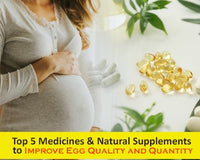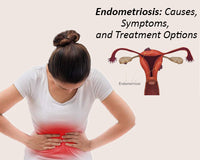Introduction
In the complex world of fertility and reproductive health, sperm count plays a crucial role. It's a topic that raises many questions and is often surrounded by misconceptions. This comprehensive guide will help you navigate through the most important aspects of sperm count, its implications on fertility, and the various factors that can influence it.
Sperm Count: The Basics
What is a normal sperm count?
A normal sperm count varies depending on the reference used. According to the World Health Organization (WHO) guidelines, a sperm count of 15 million per milliliter (ml) or more is considered normal. However, other sources may suggest a slightly different range.
What is the average sperm count?
The average sperm count is around 60 million sperm per ml, but it can vary greatly between individuals. Some men may have a sperm count as high as 200 million per ml, while others may have a count as low as 15 million per ml and still be considered fertile.
Sperm count and motility
Sperm motility refers to the ability of sperm to move and swim towards the egg. It is an essential factor in successful fertilization. Generally, a motility rate of 40% or higher is considered normal.
Factors Affecting Sperm Count and Quality
-
Age: Sperm count and quality tend to decrease with age, with a more pronounced decline after the age of 50.
-
Frequency of ejaculation: Sperm count may temporarily decrease with frequent intercourse or ejaculation, but it typically recovers within a few days.
-
Abstinence: Sperm count can increase after a short period of abstinence (1-3 days) but may decline again with prolonged abstinence.
-
Lifestyle factors: Smoking, alcohol consumption, poor diet, and lack of exercise can all negatively impact sperm count and quality.
Sperm Count and Fertility Treatments

Sperm count for pregnancy
While a higher sperm count increases the likelihood of natural conception, it is not the sole determinant of fertility. Factors such as sperm motility, morphology, and the female partner's fertility also play a significant role.
Sperm count for IUI and IVF
Intrauterine insemination (IUI) and in vitro fertilization (IVF) are common fertility treatments for couples struggling to conceive. For IUI, a sperm count of at least 5-10 million motile sperm per ml is typically required. For IVF, a lower sperm count may still be suitable, as the process involves directly combining sperm and eggs in a laboratory setting.
Sperm count and donor sperm
In cases where a male partner has a very low or no sperm count, donor sperm may be used for fertility treatments. Donor sperm must meet strict criteria, including a high sperm count and good motility.
Variability in Sperm Count
Sperm count fluctuations
Sperm count can vary significantly from one ejaculation to another. It's important to note that a single semen analysis may not provide a complete picture of an individual's fertility potential. Sometimes, multiple tests are recommended to get a more accurate assessment.
Sperm Count: Less Common Scenarios

Sperm count nil or no sperm count
Azoospermia, or having no sperm in the ejaculate, can be a cause of male infertility. This condition can be due to a blockage in the reproductive tract, hormonal imbalances, or issues with sperm production. Treatment options may include medication, surgery, or the use of donor sperm for assisted reproductive techniques.
High sperm count
Although a high sperm count can improve the chances of conception, it is not a guarantee of fertility. Other factors, such as sperm motility and morphology, can also affect fertility potential.
Sperm count less than 1 million
A sperm count of less than 1 million per ml is considered very low and can significantly reduce the chances of natural conception. Couples facing this issue may need to consider assisted reproductive techniques like IVF with intracytoplasmic sperm injection (ICSI) to increase their chances of achieving a successful pregnancy.
Sperm Count and Assisted Reproductive Techniques
Sperm count for ICSI
ICSI is a specialized form of IVF where a single sperm is injected directly into an egg. This technique can be effective even with very low sperm counts. However, the sperm must still exhibit some motility and normal morphology for the procedure to be successful.
Understanding Sperm Count Measurements and Procedures
Sperm count per ml
Sperm count is typically measured in millions of sperm per milliliter (ml) of semen. A normal sperm count according to WHO guidelines is 15 million per ml or higher.
Sperm count calculation formula
Sperm count is calculated by multiplying the concentration of sperm (sperm per ml) by the total volume of semen. For example, if the concentration is 20 million sperm per ml and the volume of semen is 3 ml, the total sperm count would be 60 million sperm. It is counted in sperm counting chamber.
Sperm count after 1 day of abstinence
Sperm count can increase after a short period of abstinence (1-3 days). However, prolonged abstinence may lead to a decline in sperm quality.
Sperm count per day
Sperm production is a continuous process, with millions of sperm being produced each day. The exact number can vary greatly between individuals.
Sperm Count, Age, and Lifestyle Factors
Sperm count age chart
As men age, sperm count and quality tend to decline. This decline becomes more pronounced after the age of 50, resulting in reduced fertility potential.
| Age Range | Sperm Count Range (Million/mL) |
|---|---|
| 18-25 | 60-100 |
| 26-30 | 55-85 |
| 31-35 | 45-75 |
| 36-40 | 40-60 |
| 41-45 | 35-55 |
| 46-50 | 30-50 |
| 51-55 | 20-40 |
| 56-60 | 15-30 |
| 61 and older | 10-25 |
Sperm count limit
There is no specific upper limit for sperm count. However, having an extremely high sperm count does not guarantee fertility, as other factors such as motility and morphology are also important.
How many sperm count in one drop?
The number of sperm in one drop of semen can vary greatly depending on an individual's sperm concentration. With an average concentration of 60 million sperm per ml, one drop of semen (approximately 0.05 ml) would contain about 3 million sperm.
Sperm count decrease with age
Sperm count and quality tend to decline with age, with a more pronounced decline after the age of 50. This can result in reduced fertility potential.
Factors Affecting Sperm Count Over Time
Sperm count chart
A sperm count chart can help track an individual's sperm count over time, taking into account factors such as age, lifestyle habits, and frequency of ejaculation. Regular semen analyses can provide valuable data for the chart, enabling a better understanding of one's fertility potential and any changes that may occur.
Does sperm count decrease with each ejaculation?
Sperm count can temporarily decrease with each ejaculation. However, it typically recovers within a few days as the body produces new sperm. Maintaining a healthy balance between abstinence and ejaculation can help ensure optimal sperm count and quality.
Sperm count procedure
A semen analysis is the standard procedure used to measure sperm count. This involves collecting a semen sample, usually through masturbation, and examining it under a microscope. The sample is evaluated for sperm concentration, motility, and morphology, among other factors.
Sperm Count and Specific Scenarios
Sperm count 8 million, 25 million, 30 million, 50 million, and 60 million per ml
Sperm counts can vary greatly between individuals. While the WHO recommends a minimum sperm count of 15 million per ml, some men may have higher sperm counts, such as 25 million, 30 million, 50 million, or even 60 million per ml. Having a higher sperm count can improve the chances of natural conception, but it's essential to consider other factors, such as motility and morphology, for a complete understanding of fertility potential.
WHO sperm analysis 2021
The WHO periodically updates its guidelines for semen analysis, taking into account the latest scientific research and clinical practices. As of 2021, the WHO recommends a minimum sperm count of 15 million per ml, with a motility rate of 40% or higher and a normal morphology rate of at least 4%.
Does sperm count decrease with frequent intercourse?
Frequent intercourse can lead to a temporary decrease in sperm count. However, it typically recovers within a few days as the body produces new sperm. Engaging in regular sexual activity while maintaining a healthy balance between abstinence and ejaculation can help ensure optimal sperm count and quality.
Sperm count and motility test
A sperm count and motility test is a part of a standard semen analysis. It measures both the number of sperm in the semen sample (sperm count) and the percentage of sperm that are actively moving (motility). These factors are crucial for understanding an individual's fertility potential.
By understanding the various aspects of sperm count and fertility, couples can make informed decisions about their reproductive health. It's essential to consider not only sperm count but also other factors, such as motility and morphology, when evaluating fertility potential. Regular semen analyses, healthy lifestyle habits, and working with fertility specialists can help couples navigate the complex world of fertility and improve their chances of conception.
A sperm count chart provides a visual representation of sperm count categories, their range, and how they relate to fertility potential. Here's a simple sperm count chart:
| Sperm Count Category | Sperm Count Range (Million/mL) | Fertility Potential |
|---|---|---|
| Very Low (Severe Oligozoospermia) | <5 | Significantly reduced |
| Low (Oligozoospermia) | 5-15 | Reduced |
| Normal (Normozoospermia) | 15-200 | Within normal range |
| High | >200 | Increased but not guaranteed |
Please note that this chart is only a general guideline, and individual fertility potential can be influenced by other factors such as sperm motility, morphology, and the female partner's fertility. It's essential to consult with a healthcare professional or fertility specialist for a comprehensive evaluation of one's fertility potential.
Frequently Asked Questions
Q1. What is the sperm count range for male fertility?
A sperm count of 15 million per ml or higher is generally considered normal for male fertility. However, other factors, such as motility and morphology, also play a role in determining fertility potential.
Q2. How much sperm count is required for pregnancy?
While there is no specific minimum sperm count required for pregnancy, a higher count increases the likelihood of natural conception. Other factors, such as motility and morphology, are also important.
Q3. Can sperm count be improved?
Yes, sperm count can often be improved by making lifestyle changes such as quitting smoking, reducing alcohol consumption, maintaining a healthy diet, exercising regularly, and managing stress.
Q4. How is sperm count measured?
Sperm count is typically measured through a semen analysis, which involves examining a semen sample under a microscope. A sperm count chamber or a specialized automated device can be used to accurately count the number of sperm per ml.
Q5. What does a low sperm count mean for pregnancy chances?
A low sperm count may reduce the chances of natural conception. However, assisted reproductive techniques such as IUI and IVF can still be successful for couples facing this issue.
Q6. Do sperm count and motility affect each other?
While sperm count and motility are separate factors, they can both impact overall fertility potential. A high sperm count with poor motility may still result in reduced fertility, while a lower count with good motility could lead to successful conception.
Q7. What is the sperm count limit for fertility treatments like IUI and IVF?
For IUI, a sperm count of at least 5-10 million motile sperm per ml is typically required. For IVF, a lower sperm count may still be suitable, as the process involves directly combining sperm and eggs in a laboratory setting.
Q8. How does age affect sperm count?
Sperm count and quality tend to decline with age, with a more pronounced decline after the age of 50. This can result in reduced fertility potential.
Q9. Can frequent intercourse or ejaculation affect sperm count?
Yes, sperm count may temporarily decrease with frequent intercourse or ejaculation. However, it typically recovers within a few days.
Q10. Is it possible to have a high sperm count but still face fertility issues?
Yes, a high sperm count does not guarantee fertility. Factors such as sperm motility, morphology, and the female partner's fertility also play a significant role in the chances of conception.
Conclusion
Understanding sperm count and its implications on fertility is essential for couples trying to conceive. While a higher sperm count increases the likelihood of natural conception, it is not the only factor that determines fertility potential. Assisted reproductive techniques like IUI and IVF can help couples with low sperm counts achieve their dream of parenthood. By making informed decisions and adopting healthy lifestyle habits, couples can improve their chances of conception and maintain optimal reproductive health.






